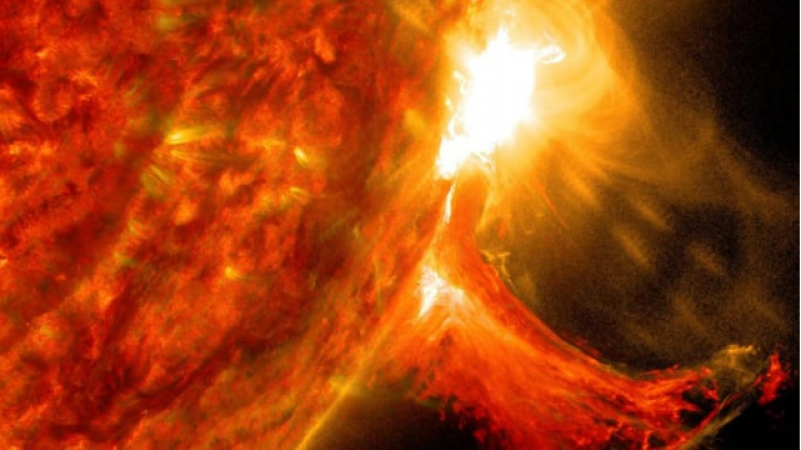
USA: On February 11, the Sun released a large solar flare that resulted in radio blackouts in some areas of the planet. According to the Space Weather Prediction Center (SWPC), it was a strong solar flare of class X1.1, and it came from active region 3217 on the Sun. More solar flares are expected from this region in the coming days, so that's not all.
Is it possible to trace the place where the solar flares will come from? According to a recent study, signals from the Sun's corona, the highest point in the Sun's atmosphere, can be used to predict which parts of the star are most likely to generate flames. Solar flares are a problem because they can endanger power grids, navigation signals and radio communications systems.
According to NASA, solar flares are giant solar explosions that send energy, light and fast particles into space. Flares are broadly classified as A, B, C, M and X and range in intensity. Each class is divided into subgroups numbered 1–9, and the energy level in each class is increased by a factor of 10.
Also Read: Starlink's purpose in Ukraine is explained by Musk
While X-class solar flares are the strongest, C-class and smaller ones are considered less significant events. M-class flares have the potential to briefly disrupt radio communications over the poles and are sometimes followed by weak radiation storms.
In 2003, there was one of the most powerful solar flares ever observed. The space weather sensors that were measuring the X28 solar flare were overwhelmed by its power.
The X1.1 solar flare, according to SWPC, caused a brief radio blackout across South America. As active region 3217 "moves across the Sun producing an occasional degradation of high-frequency (3-30 MHz) communications," SWPC officials warned in an alert, more flares are expected from the region.
Also Read: Hungary criticizes EU efforts to arm Ukraine
Coronal mass ejections are caused by strong solar flares (CMEs). These giant clouds of solar plasma and magnetic fields are sent into space after a solar eruption.
At speeds ranging from 250 km/s to about 3,000 km/s, CMEs shoot out from the Sun. The fastest CMEs directed towards Earth can take 15 to 18 hours to reach the planet.
The X1.1 solar flare that occurred on February 11 was not accompanied by the CME. However, a CME from a separate event, the eruption of the solar filament from the Sun's northern hemisphere, was observed, according to spaceweather.com.
Also Read: African nation "clears" objections to the Russian base deal
Earth's approach to this CME could result in intense aurorae, which are expected to occur on February 14.